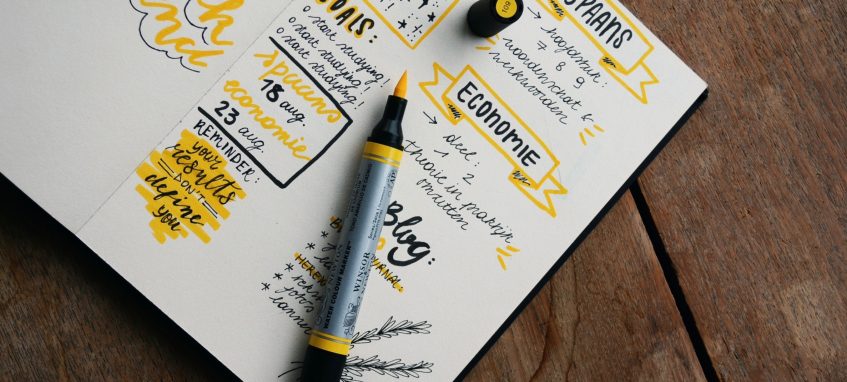How Drawing Doodles Can Help You in College

Imagine the following scenario: a college classroom with a teacher droning on and students spacing out. As your mind wanders and you begin to daydream, the person next to you is doodling in their notebook. You’re thinking that they won’t remember anything from this lecture either. You would be wrong.
In fact, the doodler next to you is likely to retain 29% more information than you did from that boring lecture.
Much has been made recently of the cognitive benefits of doodling. Books like The Doodle Revolution by Sunni Brown and Drawing is Magic by John Hendrix follow on the heels of a 2008 book Drawing is Thinking by Milton Glaser. According to these and other authors, what may seem like the physical representation of daydreaming is something that helps connect people to ideas and concepts that they’re being exposed to.
Remember More
For example, in a 2009 study conducted by Psychology professor Jackie Andrade tested the effects of doodling while listening to a boring telephone message. The subjects who were asked to doodle were able to remember more information contained in the message than the subjects who only listened to the message while sitting still.
Another example was found in an article printed in the Wall Street Journal where medical student Michiko Maruyama explains how her “daily doodles” helps her to synthesize the information passed on in that day’s lecture. Her system seems to work well for her. In fact, when she tested it by stopping her doodling practice for a week, her grades suffered.
Stimulate Creativity
But doodling doesn’t only help you recall information. It can also help generate ideas. Architect Gabriela Goldshmidt conducted a study in 2014 in which a student doodled his name over and over again while meditating on a child’s kindergarten he was assigned to design. During the course of his doodling, he began to unlock a vision of the kindergarten and was able to transfer it to a sketch for class.
The author of the book Drawing is Magic recalls that most people draw and doodle as children, but as adults, they stop. He encourages people to doodle in order to recreate the lightness and playfulness of childhood which is also where a wealth of creativity and ideas dwell.
Find Joy in Learning
In a study by Charlotte Hughes and Scott Asakawa, they report that when students were encouraged to “draw what they learned during lecture, and while doing assigned readings…[they] not only retained more information, but they also reported more enjoyment and engagement with the course material.”
Elisabeth Irgens, a proponent of doodling, highlights the idea that the visual aspect of note-taking is like “adding some joy” to your notes and makes you want to take them out and look at them again.
Try It
If you want to try doodling and see what all the hype is about, here are some expert tips on how to get started:
- Grab some pencils, pens, markers or colored pencils. Whatever you like to use.
- You don’t have to make the whole thing official by buying a block of drawing paper. That can feel too intimidating. Just a regular notebook is fine for doodling.
- Many people find that a combination of words and drawings works best. Keywords from your reading or lecture paired with visual representations of your thoughts, associations and ideas.
- Think about the flow on the page – most people are inclined to work from top to bottom and left to right. But that doesn’t mean you have to. Whatever flow makes sense to you as you move through the material and find your spacing on the page.
- Use colors as markers – some people respond to colors in emotional ways. Colors can serve as ways to highlight a specific point or convey an opinion about a subject without putting that opinion into words.
These are just some tips on doodling. There is no right or wrong way to do it. Try it out for yourself and see the results.










